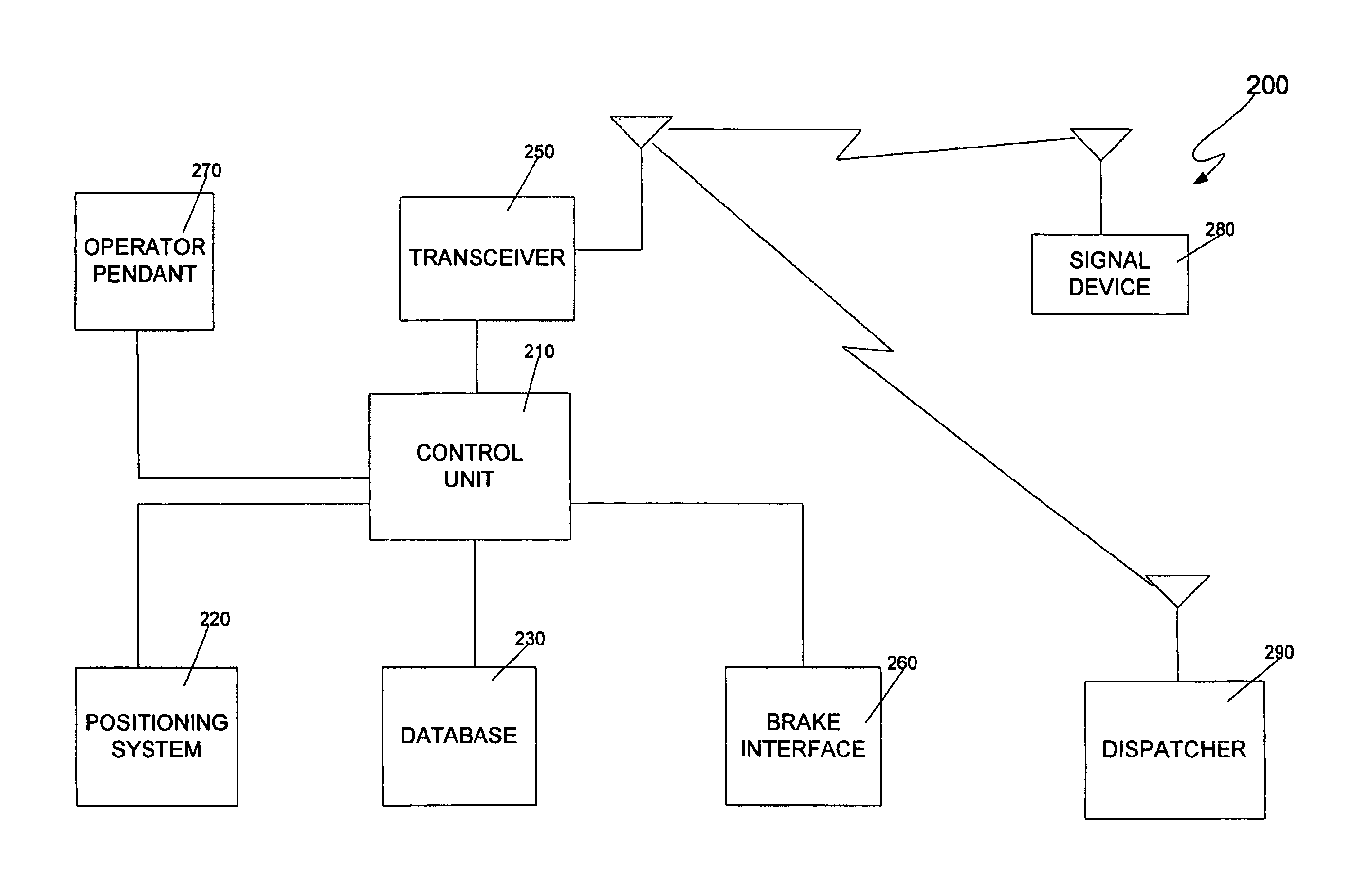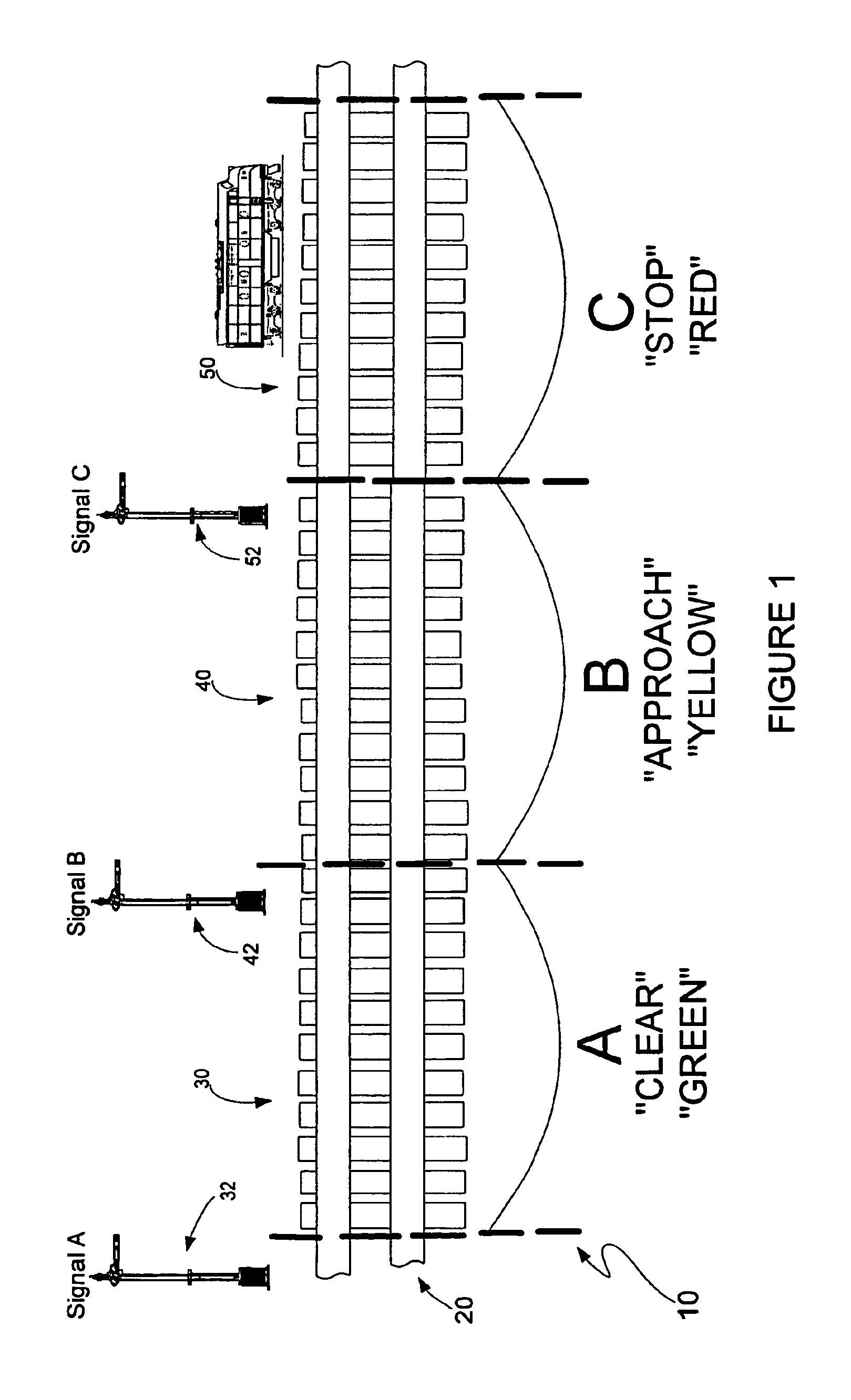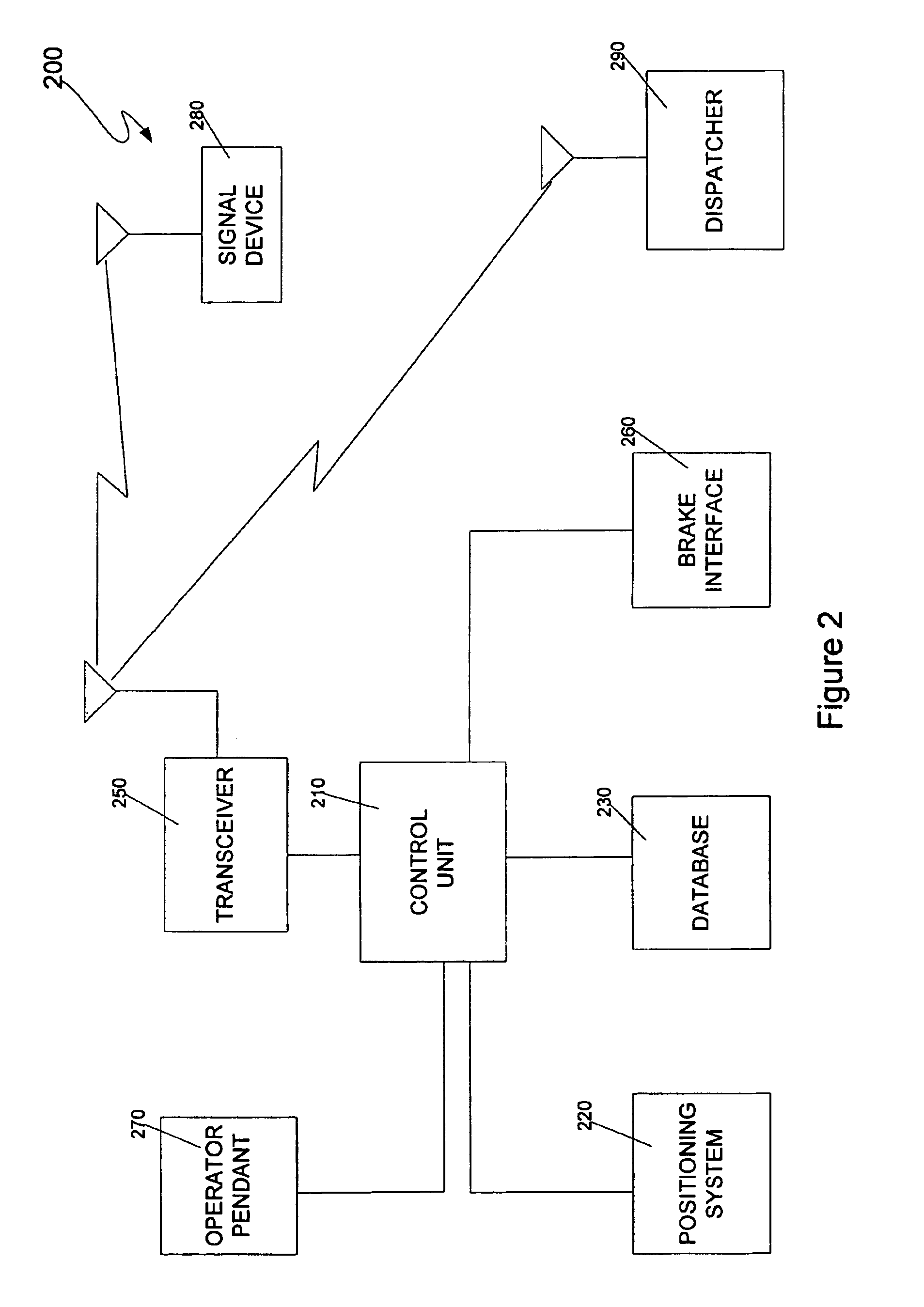Lifting restrictive signaling in a block
a technology of restrictive signaling and block, applied in the field of rails, can solve the problems of increasing costs, reducing efficiency of train operation, restricting signals in one block,
- Summary
- Abstract
- Description
- Claims
- Application Information
AI Technical Summary
Benefits of technology
Problems solved by technology
Method used
Image
Examples
Embodiment Construction
The present invention will be discussed with reference to preferred embodiments of train control systems. Specific details, such as types of signaling systems, are set forth in order to provide a thorough understanding of the present invention. The preferred embodiments discussed herein should not be understood to limit the invention. Furthermore, for ease of understanding, certain method steps are delineated as separate steps; however, these steps should not be construed as necessarily distinct nor order dependent in their performance.
Referring now to the drawings, wherein like reference numerals designate identical or corresponding parts throughout the several views, FIG. 1 illustrates a traditional ABS system 10 in which a train track 20 that has been divided into three blocks 30, 40, 50 labeled “A,”“B” and “C,” respectively. A wayside signal 32, 42 and 52 is associated with each of the blocks 20, 40 and 50. The wayside signals 32, 42, 52 include colored lights to provide visual ...
PUM
 Login to View More
Login to View More Abstract
Description
Claims
Application Information
 Login to View More
Login to View More - R&D
- Intellectual Property
- Life Sciences
- Materials
- Tech Scout
- Unparalleled Data Quality
- Higher Quality Content
- 60% Fewer Hallucinations
Browse by: Latest US Patents, China's latest patents, Technical Efficacy Thesaurus, Application Domain, Technology Topic, Popular Technical Reports.
© 2025 PatSnap. All rights reserved.Legal|Privacy policy|Modern Slavery Act Transparency Statement|Sitemap|About US| Contact US: help@patsnap.com



